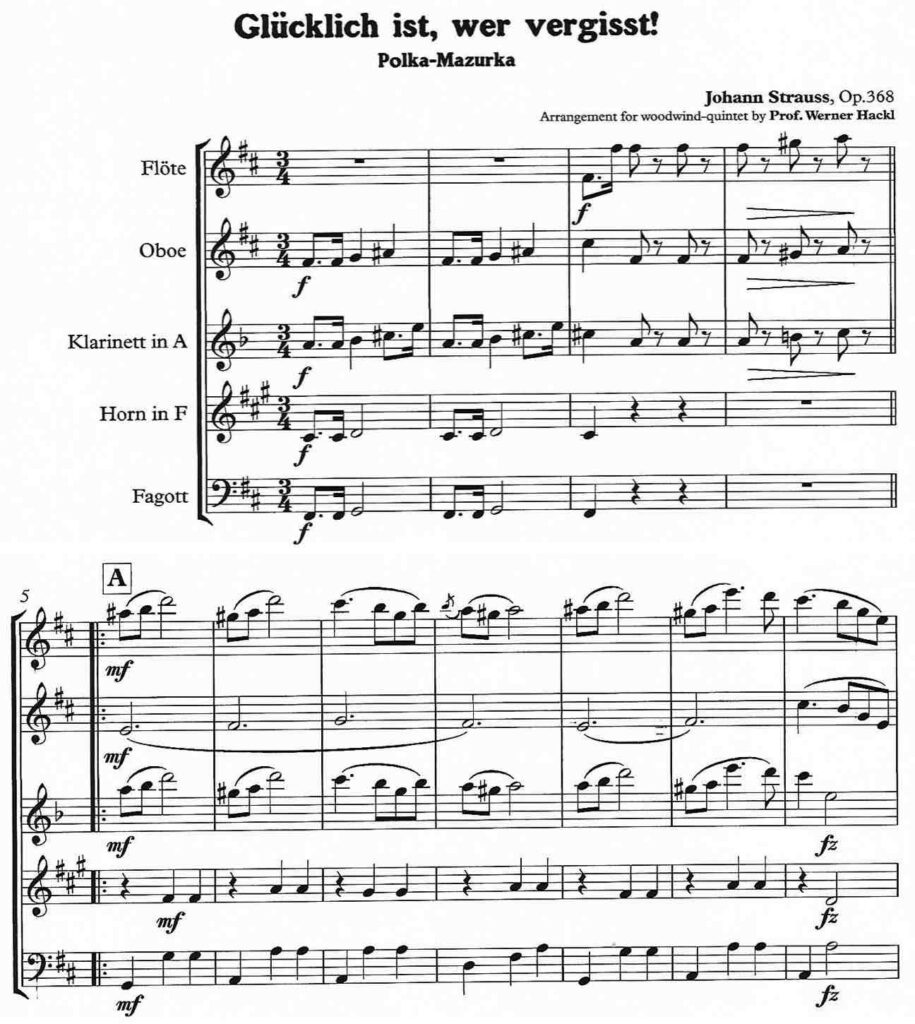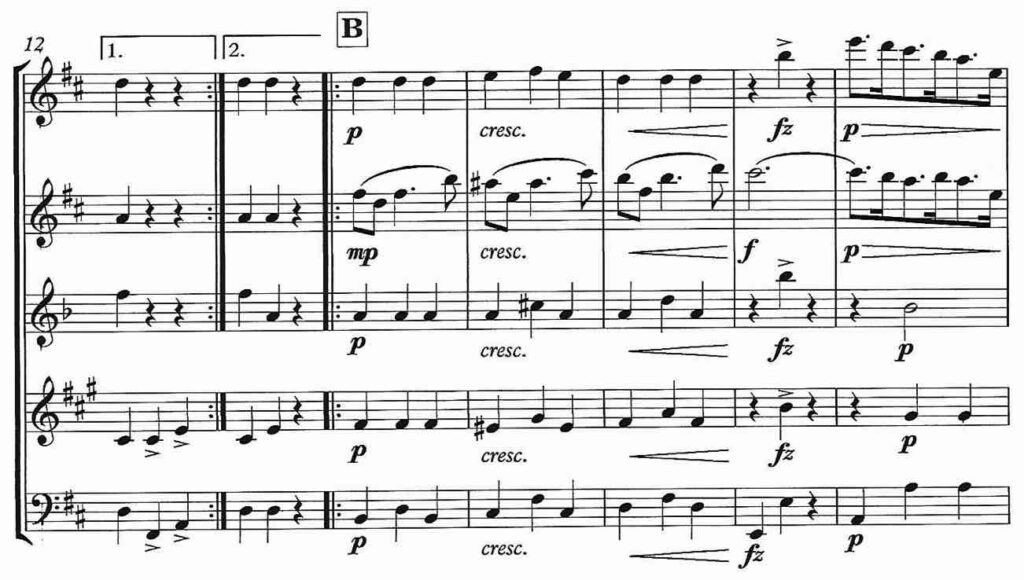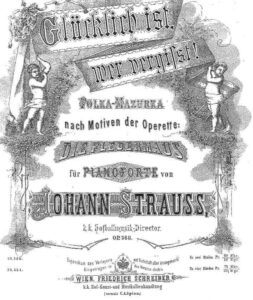Johann Strauss II (1825-1899) Glücklich ist, wer vergißt! / Happy is he who forgets! , Polka-Mazur op. 368


Die Polka wurde nach Motiven der Operette Die Fledermaus zusammengestellt. Damit reiht sich das Werk in eine Reihe von Kompositionen (Opus Nummern 362, 363, 365, 366 und 367) ein, die alle Themen aus dieser Operette aufgreifen. Das Hauptthema der Polka ist das titelgebende Duett Glücklich ist wer vergißt aus dem 1. Akt. Der Komponist hat aber auch das Lied der Rosalinde So muß allein ich bleiben, ebenfalls aus dem 1. Akt, und ein Teil der Ballettmusik aus dem 2. Akt der Operette für diese Polka verwendet. Hinzu kommt noch ein Musikstück, das vielleicht für Die Fledermaus vorgesehen war, aber dort dann noch nicht verarbeitet wurde. Ort und Datum der Uraufführung sind nicht überliefert. Wahrscheinlich wurde die Polka von Militärkapellen im Oktober oder November 1874 erstmals gespielt. Aufführungen der Strauss-Kapelle

The polka was compiled based on motifs from the operetta The Bat. The work thus joins a series of compositions (opus numbers 362, 363, 365, 366, and 367) that take up all the themes from this operetta. The main theme of the polka is the eponymous duet Happy is whoever forgets from Act 1. The composer also has the song of Rosalinde So I must remain alone, also from Act 1, and part of the ballet music used for this polka in the second act of the operetta. There is also a piece of music that was perhaps intended for The bat, but was not used there yet. The place and date of the premiere are not known. The polka was probably first played by military bands in October or November 1874. Performances by the Strauss Orchestra have not been recorded.
| sound sample / Tonbeispiel | score/parts PDF download: € 16,- | add to cart / in den Warenkorb |
